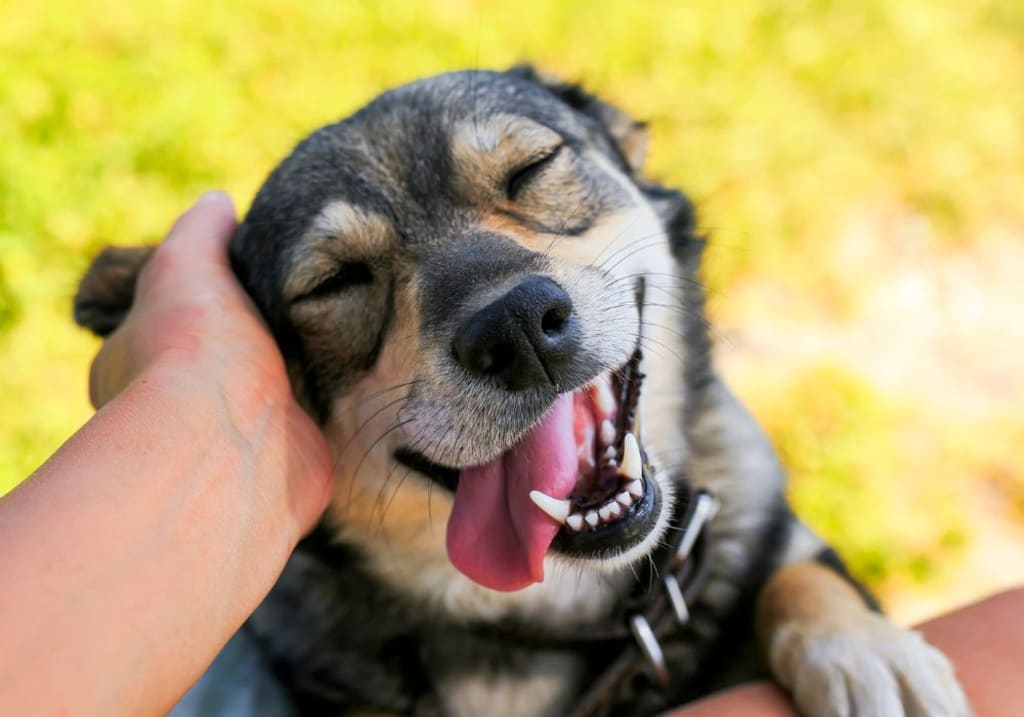Understanding Your Dog's Body Language
Unlocking the Secrets of Canine Communication

When it comes to understanding your dog's behavior, it's crucial to recognize the subtle cues they convey through body language. Dogs communicate primarily through nonverbal signals, which can be misinterpreted if you don't know what to look for. By understanding your dog's body language, you can build a stronger bond, prevent misunderstandings, and even address behavioral issues. In this article, we'll delve into the fascinating world of canine communication, exploring the key elements of dog body language and how to decipher their hidden messages.
Understanding Canine Body Language
Dogs use a range of body language cues to convey their emotions, needs, and intentions. These cues can be divided into several categories:
- Posture: A dog's posture can reveal their mood, confidence, and intentions. For example, a relaxed dog will often have a loose, open posture, while a tense or anxious dog may display a stiff, closed-off posture.
- Facial Expressions: A dog's facial expressions can convey a range of emotions, from happiness to fear. Pay attention to the shape of their ears, the position of their tail, and the tension in their facial muscles.
- Tail Language: A dog's tail can be a powerful indicator of their mood. A wagging tail often signifies excitement or friendliness, while a tucked tail can indicate fear or submission.
- Eye Contact: Dogs use eye contact to communicate interest, attention, or aggression. Avoid direct eye contact with a dog that's feeling threatened or defensive.
- Vocalizations: Dogs use vocalizations to convey emotions and needs. Pay attention to the tone, volume, and pitch of their barks, whines, or growls.
Deciphering the Hidden Messages
Now that you know the key elements of canine body language, let's explore some common scenarios and how to interpret the hidden messages:
Scenario 1: Meeting a New Dog
When introducing your dog to a new canine companion, pay attention to their body language. If your dog:
- Tails tucked and ears back: They may be feeling anxious or defensive.
- Wagging tail and relaxed posture: They're likely excited and friendly.
- Avoiding eye contact: They might be feeling shy or intimidated.
Scenario 2: Interacting with Humans
When interacting with humans, dogs use body language to convey their emotions and needs. If your dog:
- Paws at you: They're seeking attention or affection.
- Yawns: They're feeling stressed or overwhelmed.
- Licks their lips: They're anxious or nervous.
- Avoids eye contact: They might be feeling shy or submissive.
Scenario 3: Resource Guarding
Resource guarding is a common issue in dogs, where they become protective of food, toys, or other resources. If your dog:
- Growls or snaps: They're feeling threatened or defensive.
- Tails tucked and ears back: They're likely feeling anxious or submissive.
- Stands over the resource: They're trying to assert dominance.
Tips for Improving Communication
To improve your understanding of your dog's body language, follow these tips:
- Observe Your Dog: Spend time observing your dog's behavior and body language. Take note of the cues they display in different situations.
- Be Patient: Understanding canine body language takes time and practice. Be patient and don't rush into interactions.
- Use Positive Reinforcement: Reward your dog for good behavior and calm body language. This can help them associate positive outcomes with relaxed behavior.
- Manage Stress: Identify and manage stressors in your dog's environment to reduce anxiety and improve their overall well-being.
- Seek Professional Help: If you're experiencing difficulties with your dog's behavior or body language, consult a professional dog trainer or behaviorist for personalized guidance.
Conclusion
Understanding your dog's body language is crucial for building a strong bond and preventing misunderstandings. By recognizing the subtle cues they convey through posture, facial expressions, and behavior, you can improve communication and address behavioral issues. Remember to observe your dog, be patient, use positive reinforcement, manage stress, and seek professional help when needed. By doing so, you'll unlock the secrets of canine communication and strengthen your relationship with your furry companion.
About the Creator
Hasan
Welcome...
In this site of mine you can learn amazing things and many information that you don't know so please subscribe to my site.
Enjoyed the story? Support the Creator.
Subscribe for free to receive all their stories in your feed. You could also pledge your support or give them a one-off tip, letting them know you appreciate their work.






Comments
There are no comments for this story
Be the first to respond and start the conversation.